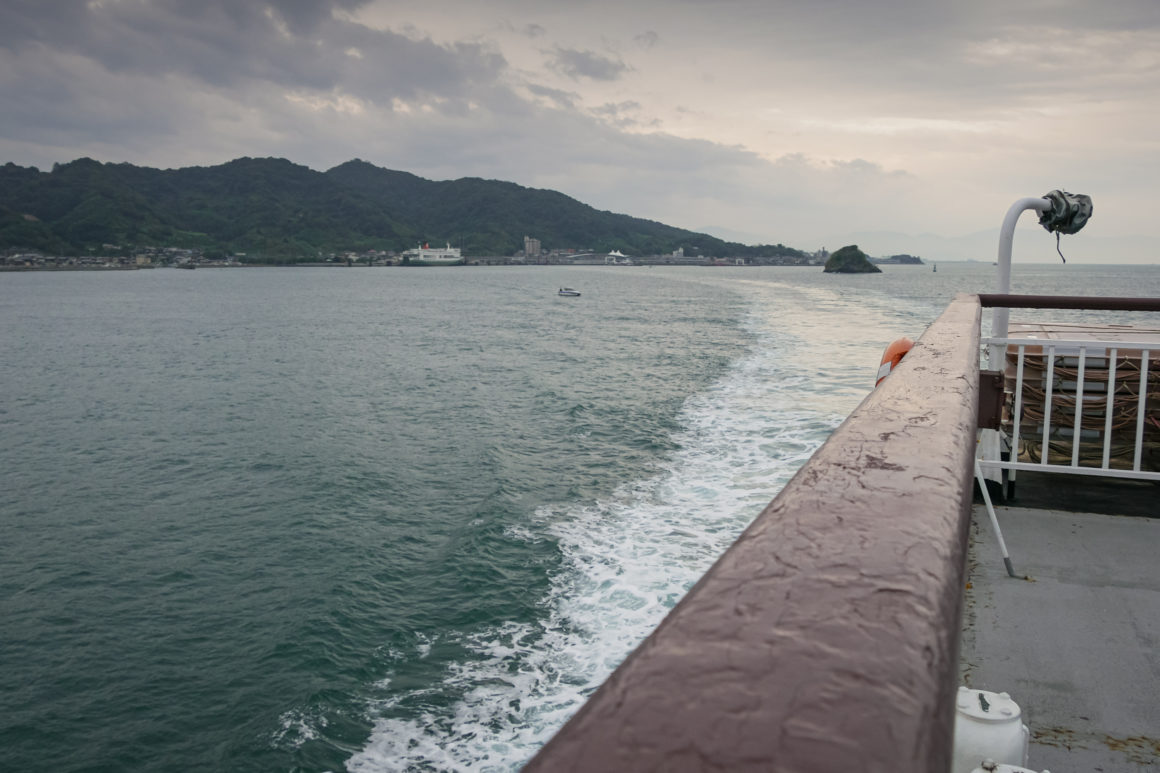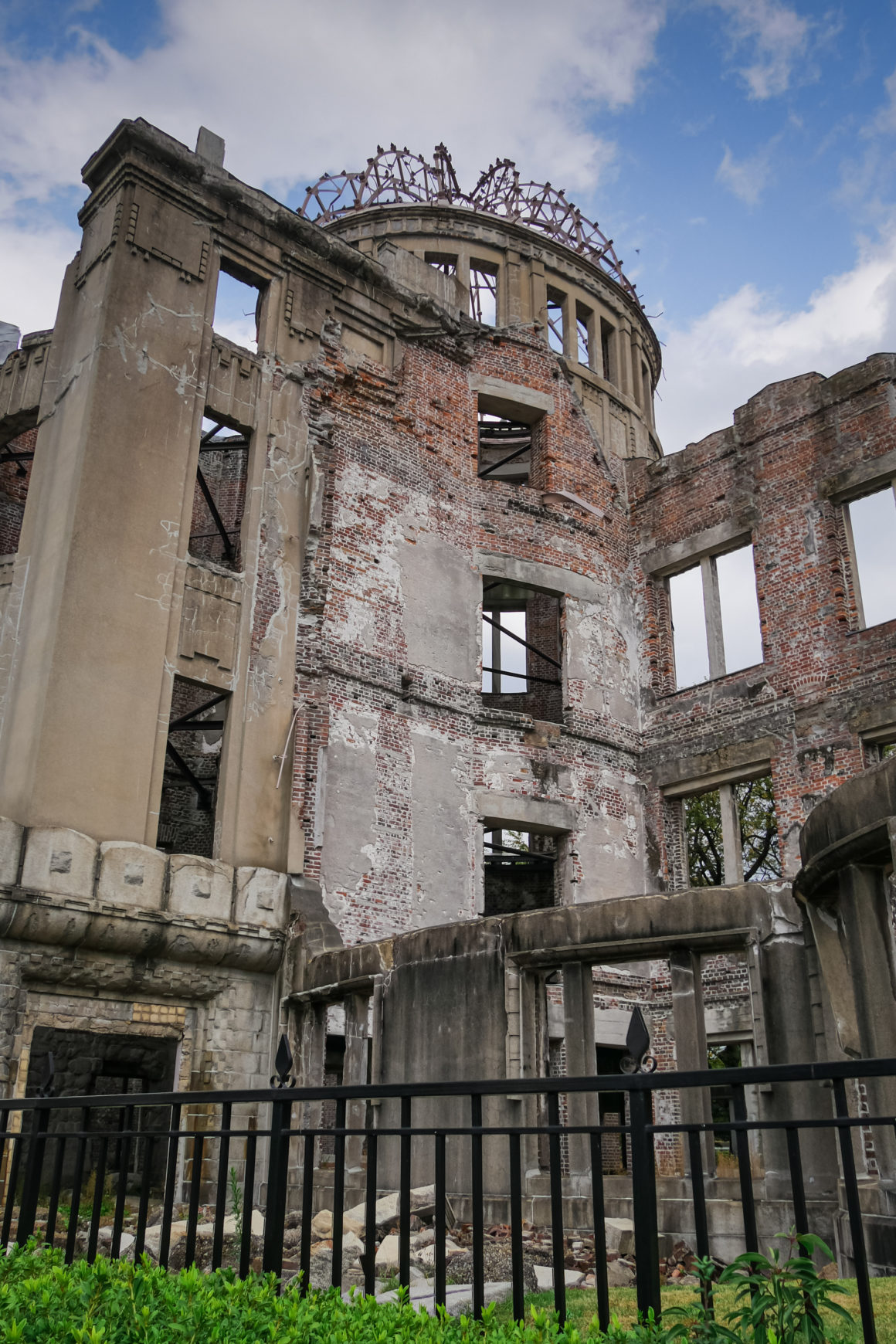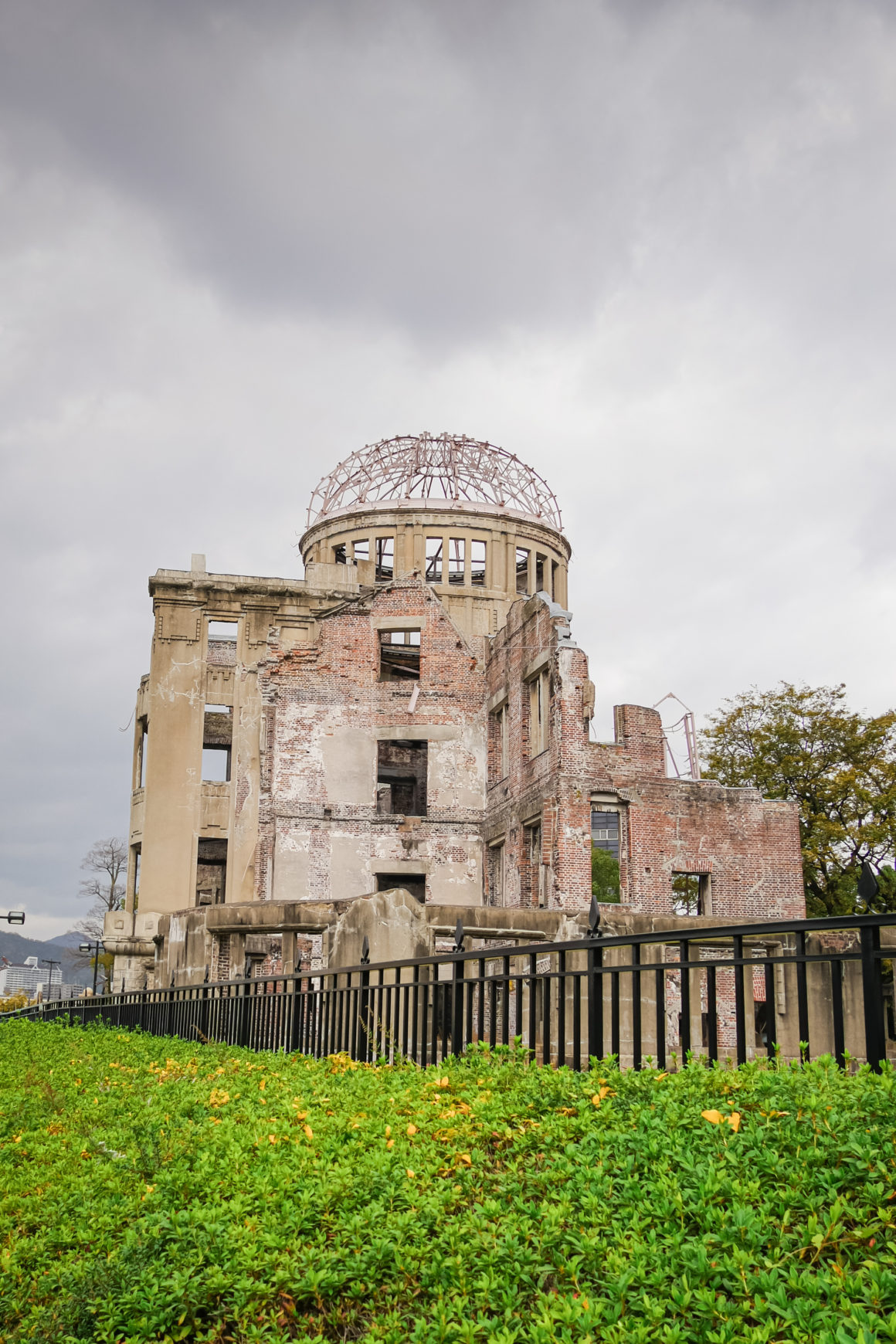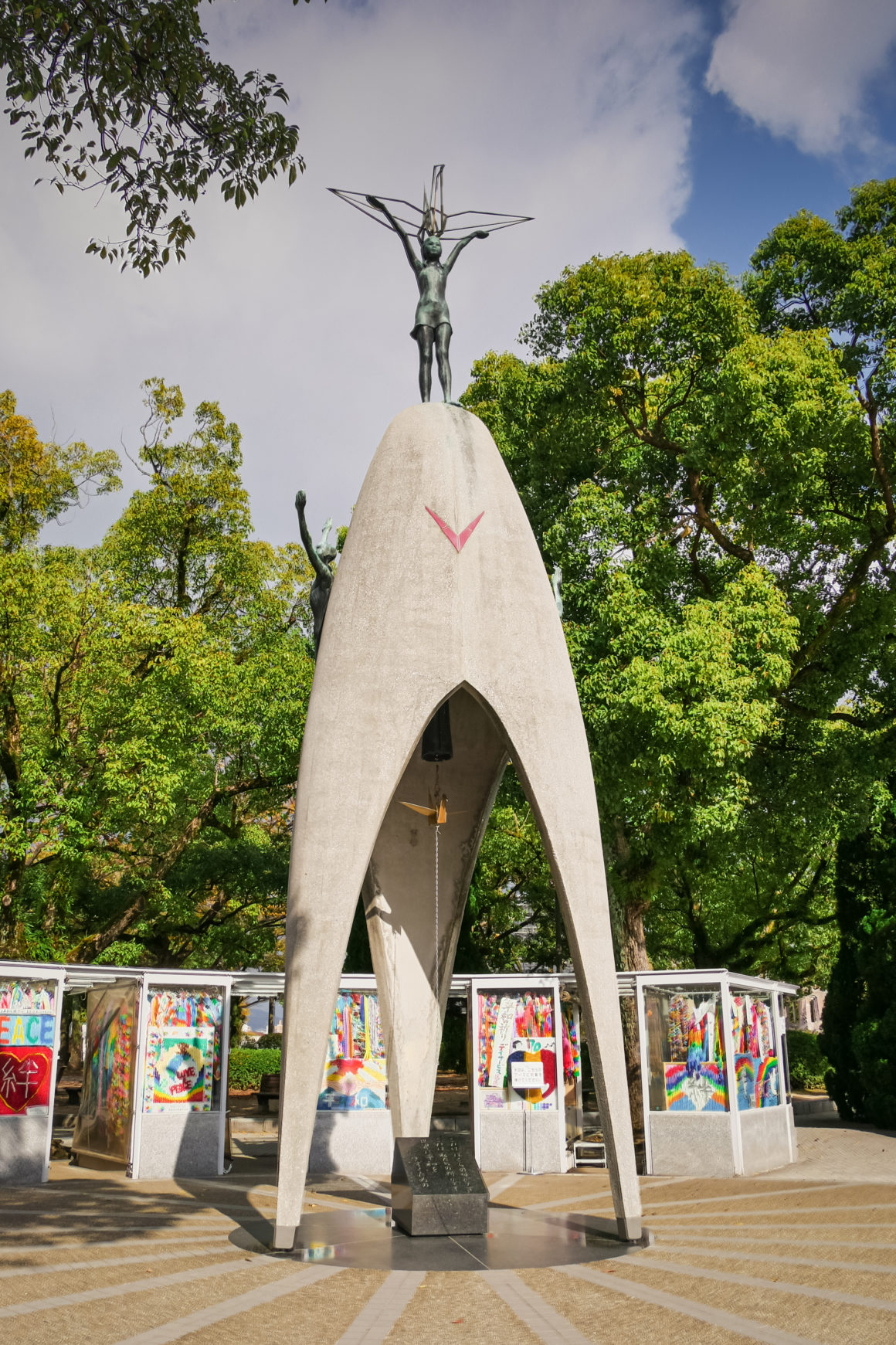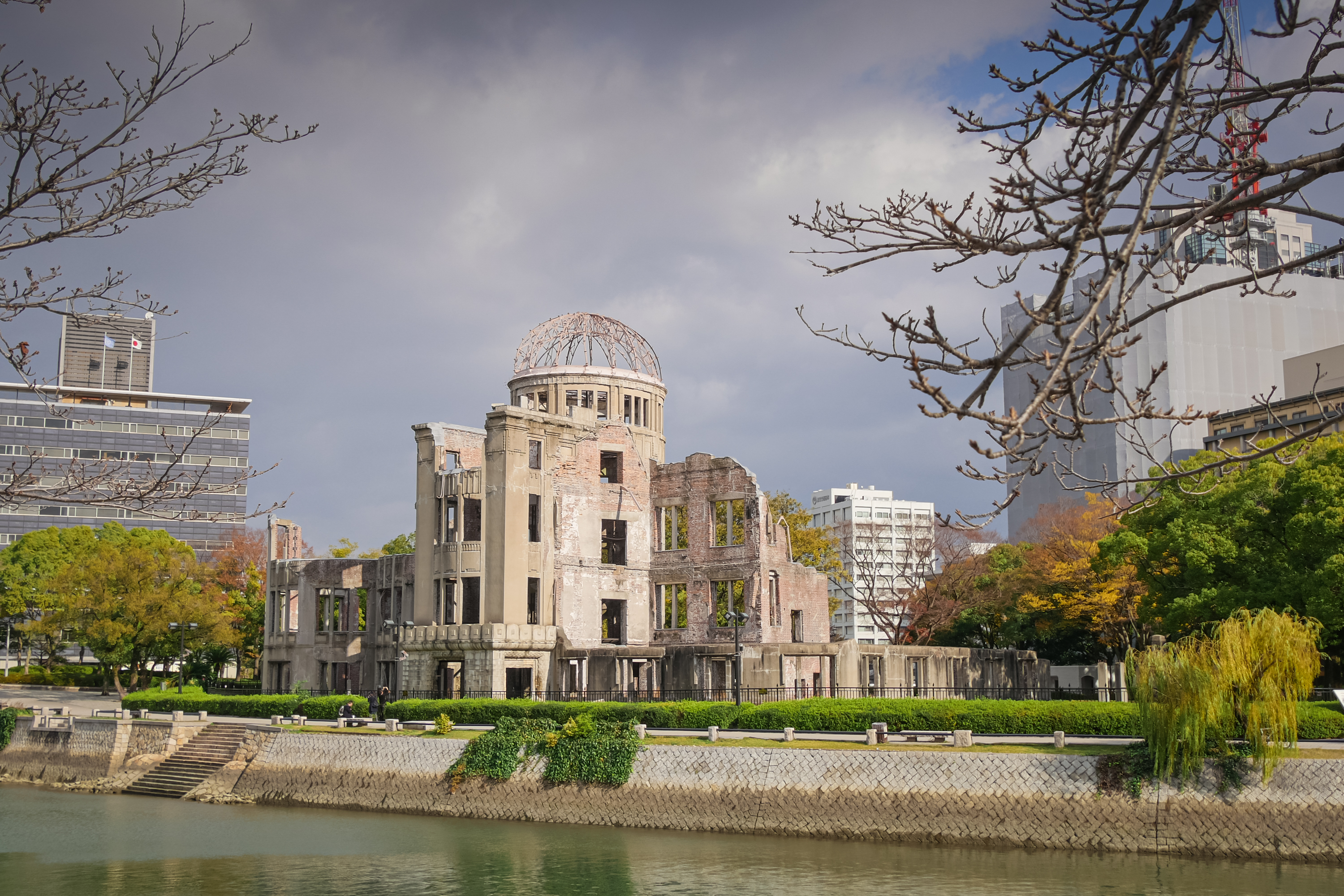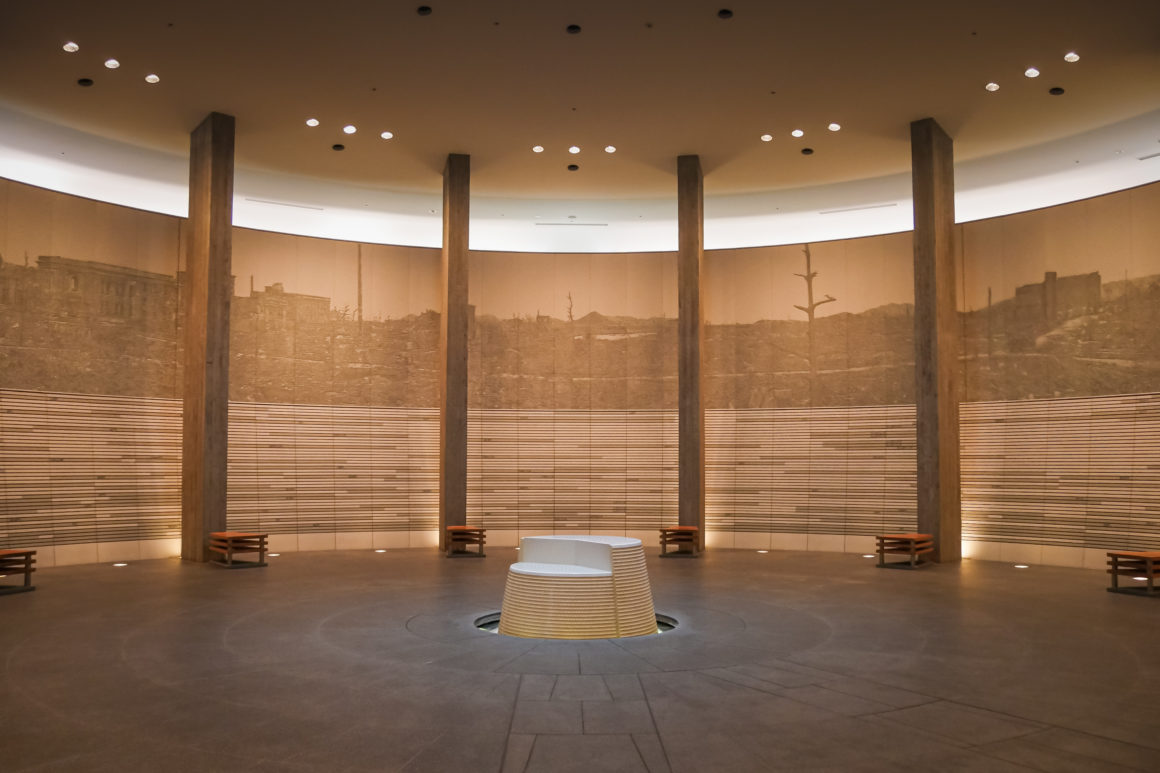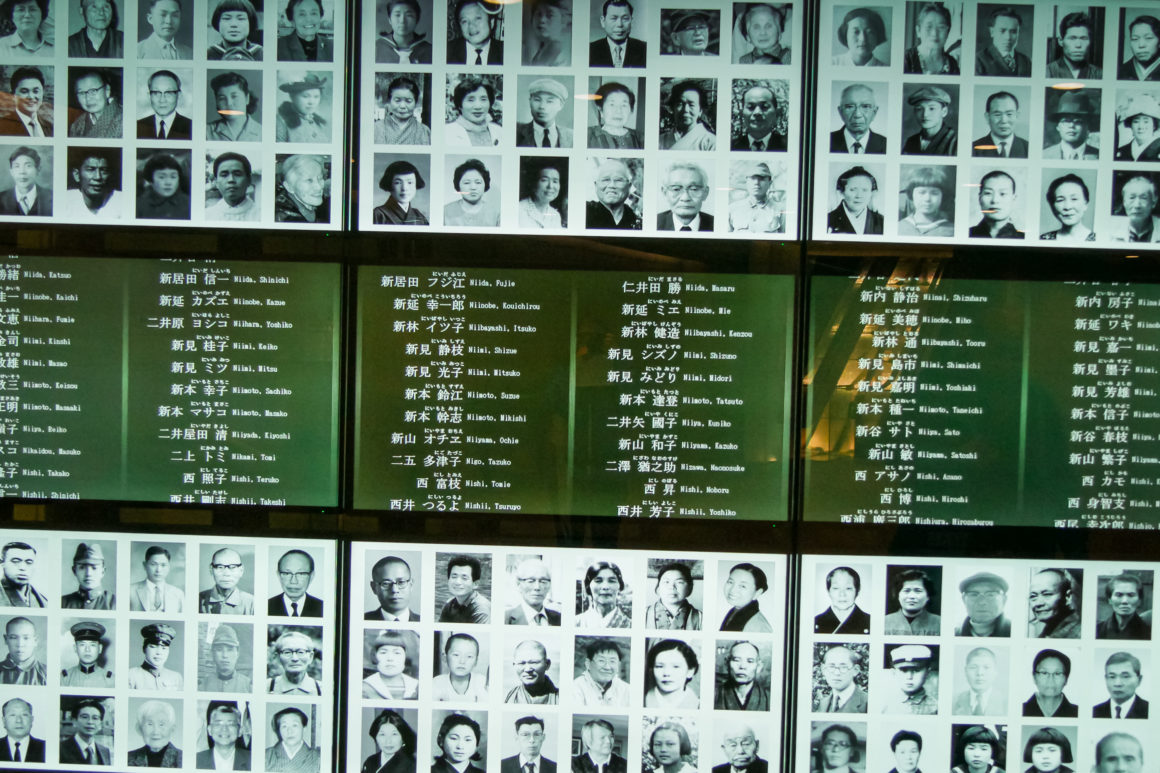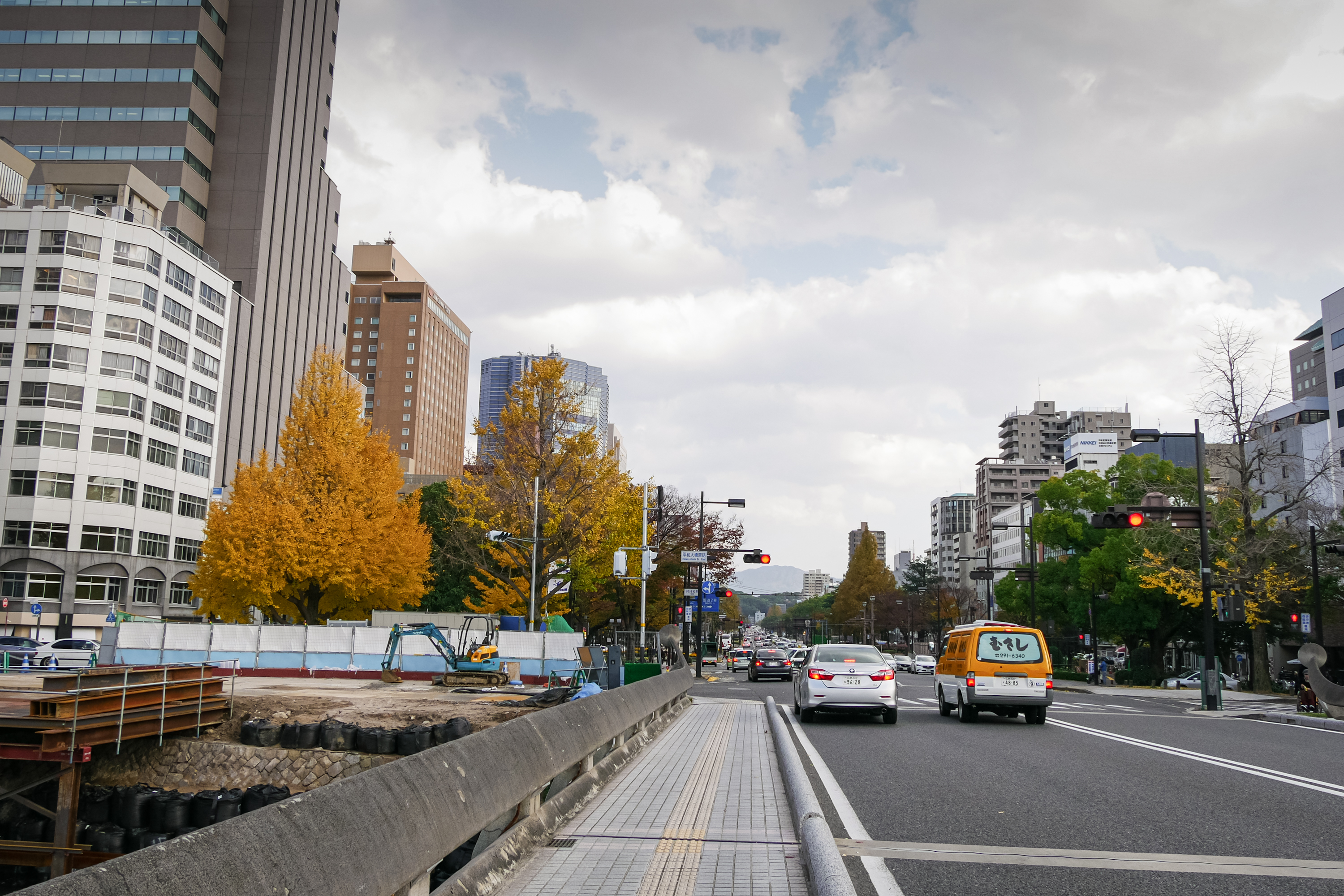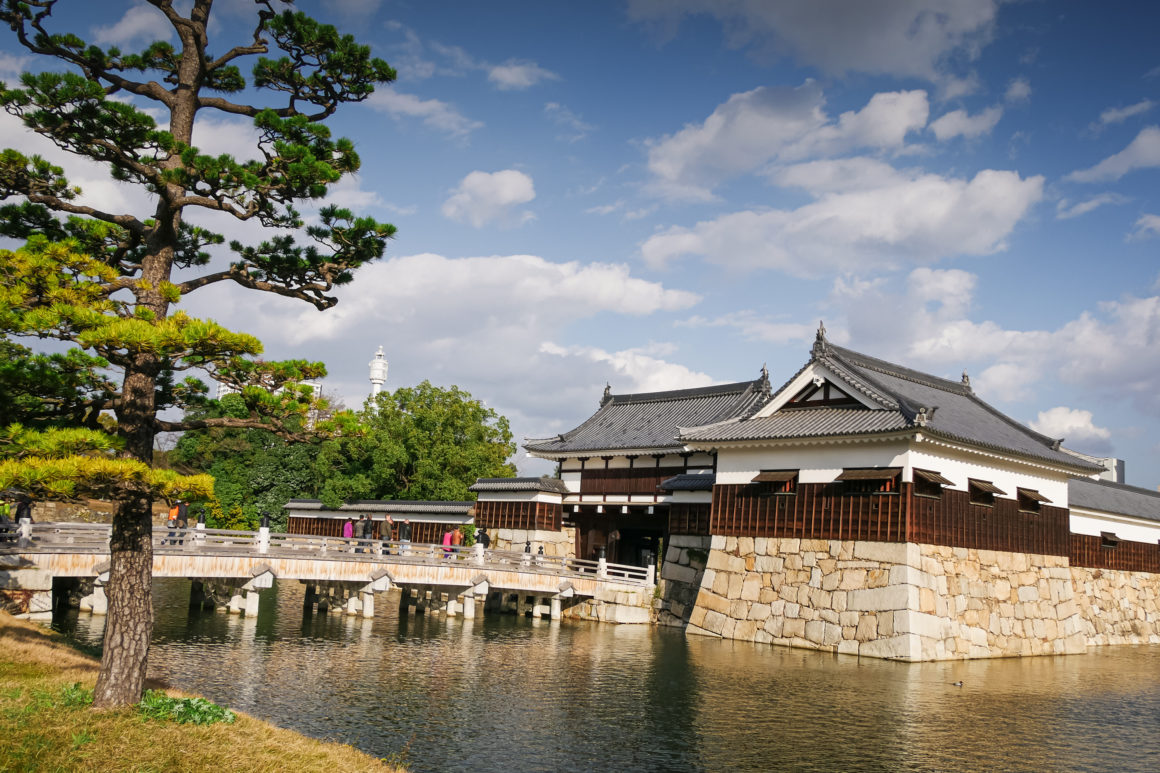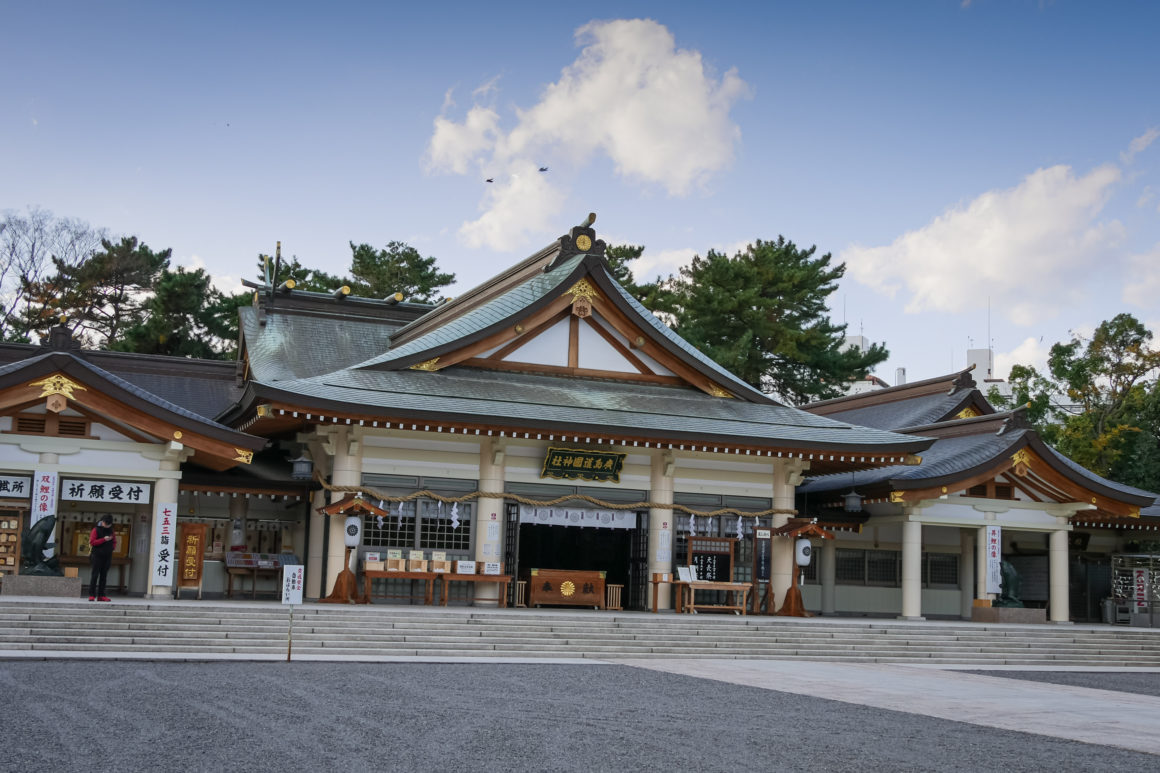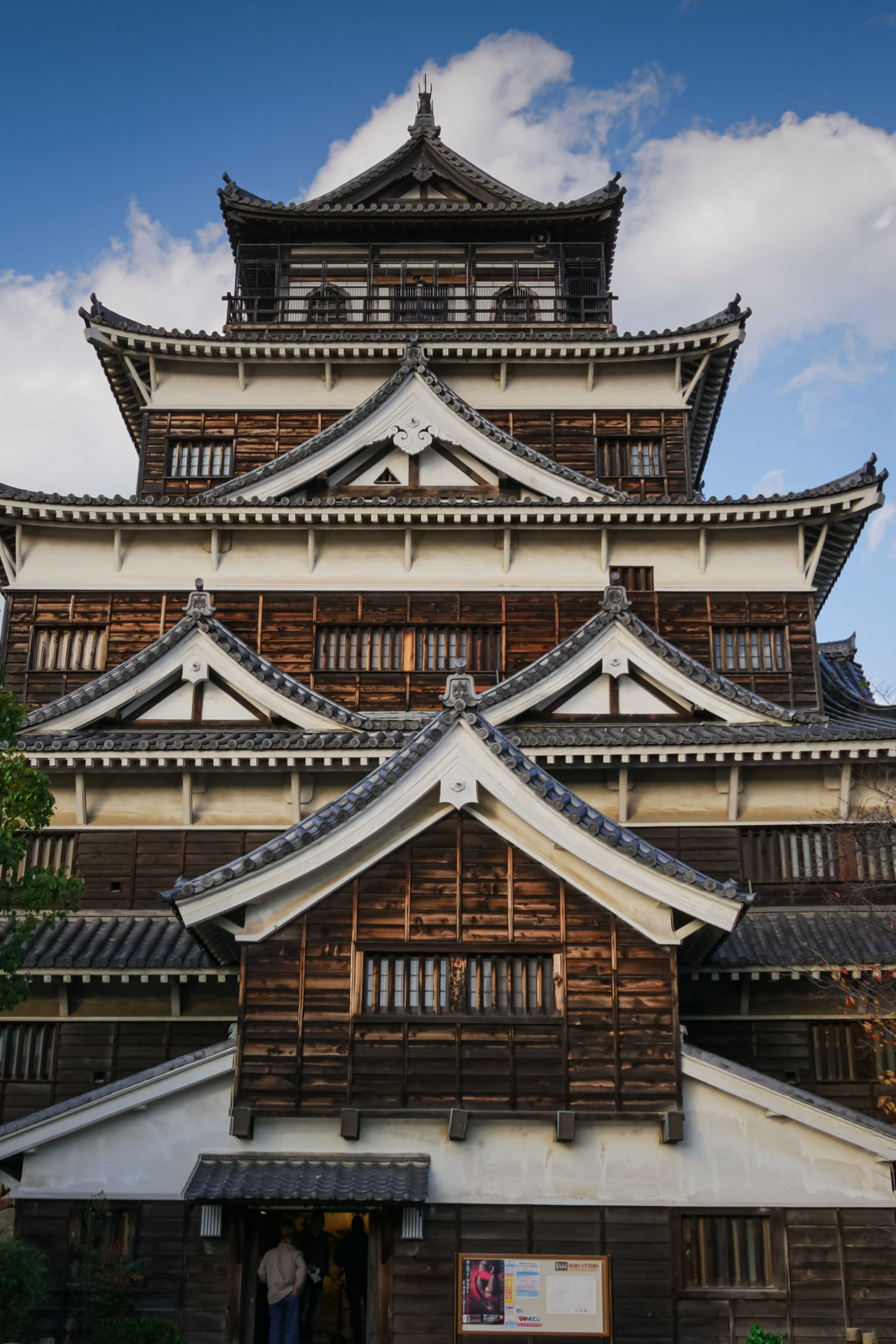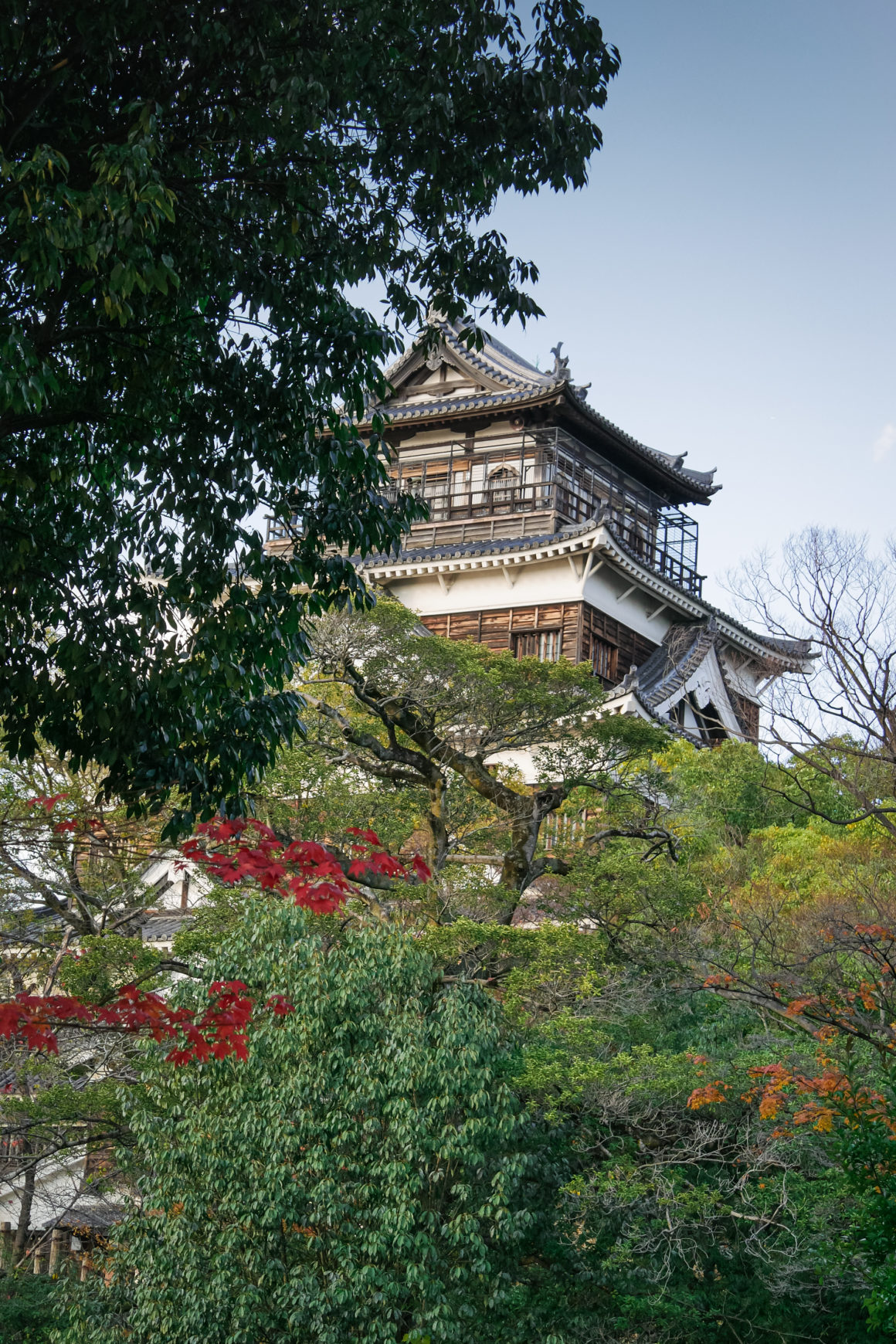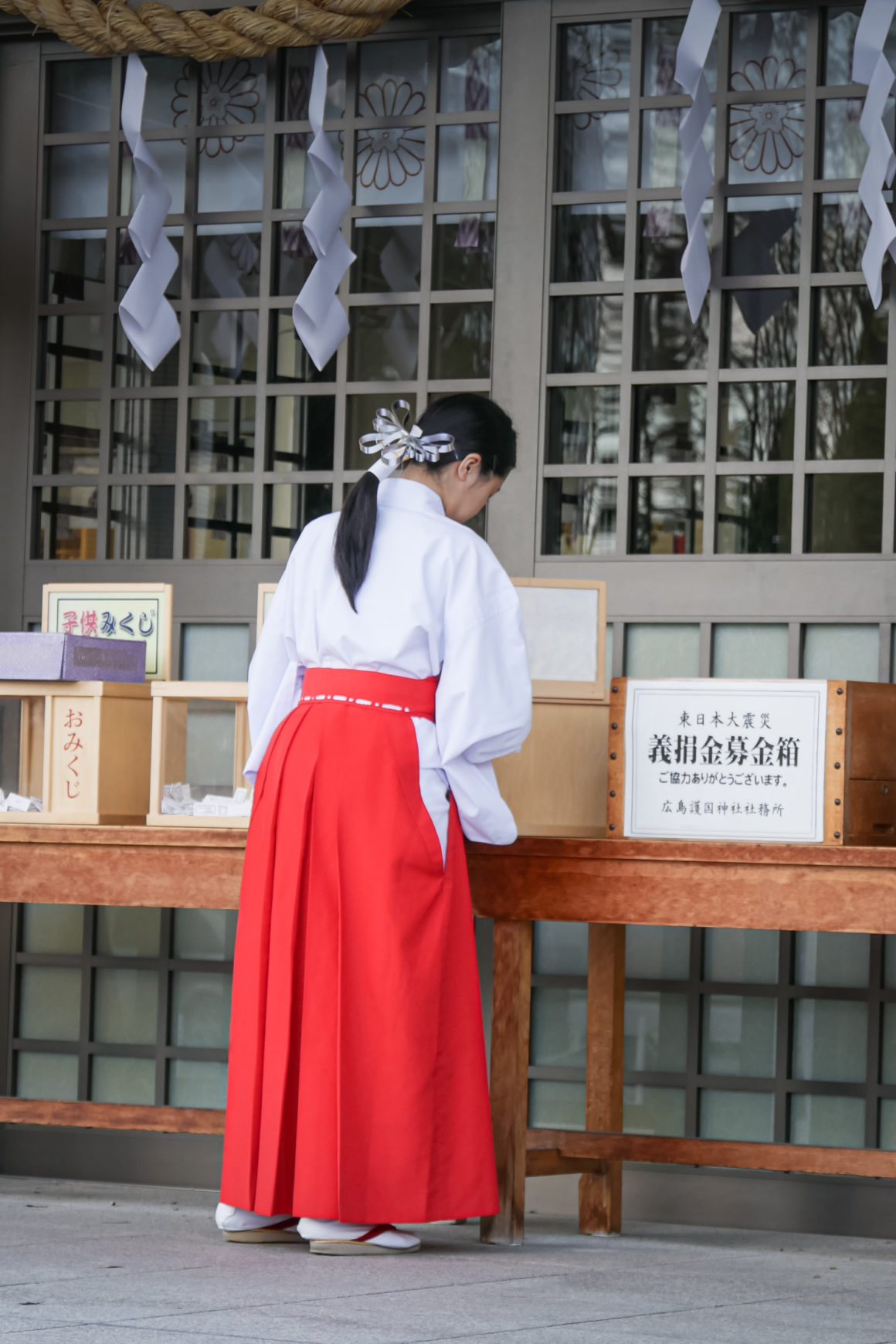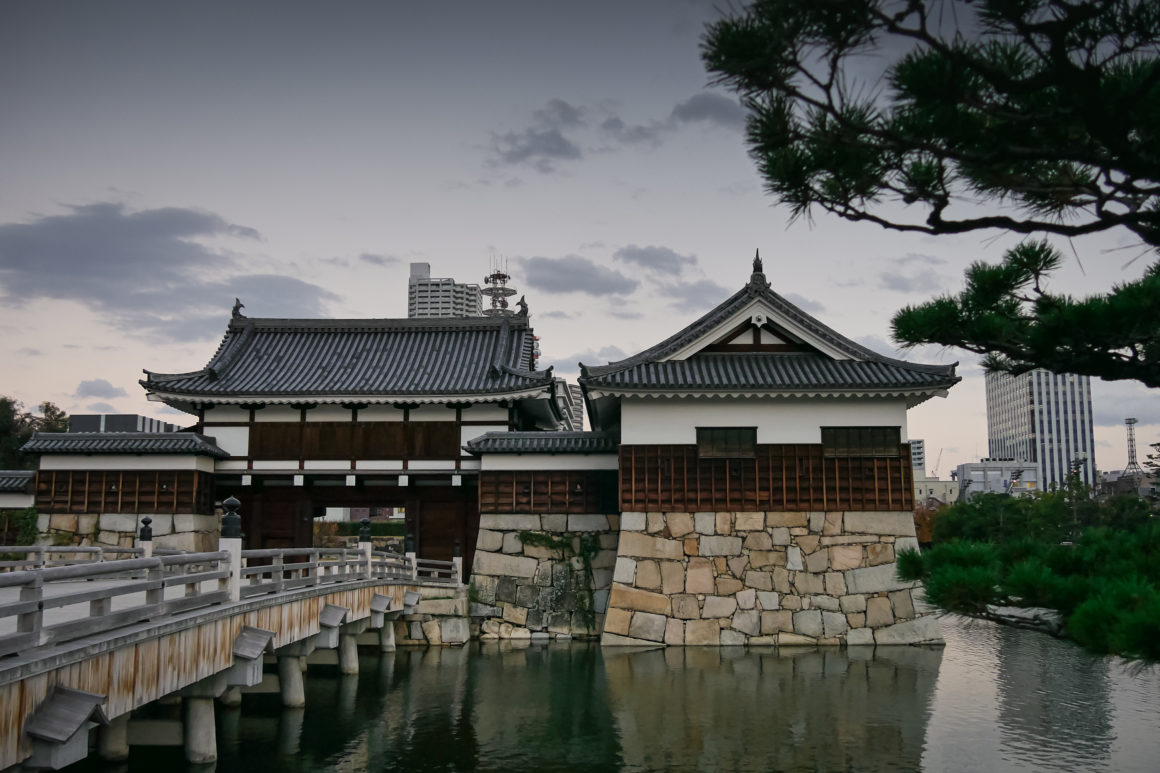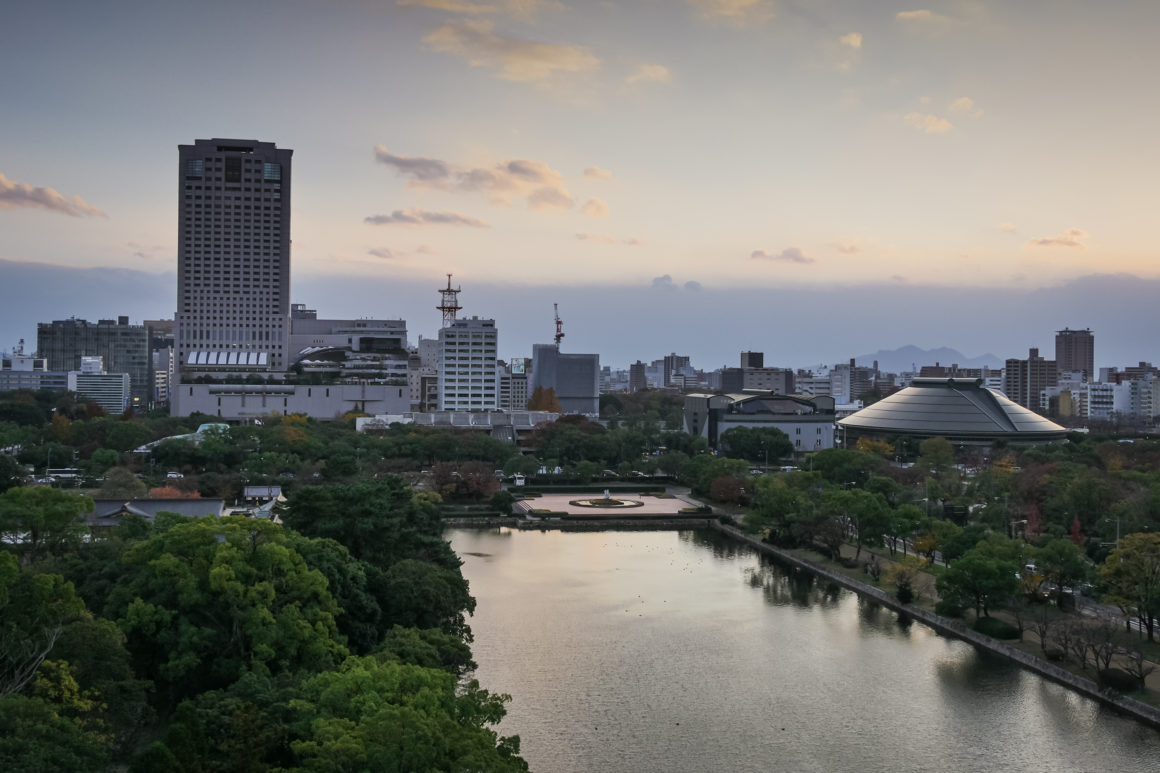DISPATCH
Wednesday December 2, I leave Kôchi by bus at 10:20 am. The journey to Matsuyama on the northwest coast of Shikoku is peaceful. The bus drops me off in front of Matsuyama station at 1:45 p.m. I swallow my midday meal quickly and then take another bus which takes me to the ferry terminal. I barely have five minutes to buy my ticket and rush to get on board. I haven’t been on a ferry for at least a decade. The view of the coastline which recedes fills me with joy, without me knowing why. The crossing is peaceful, the ferry sails between the various islands that dot the route.
I arrive in Hiroshima around 4 p.m. It is raining and almost dark. I take the tram to reach my guesthouse, forty minutes from the ferry terminal. It is in torrential rain that I arrive at my destination. The entrance to my accommodation is located in a tiny lane (easy to miss it!). First time I spend the night in dormitories since my arrival in Japan. I am a little apprehensive but it is going very well. The guesthouse is tiny but very pleasant. I share the female dormitory with Jenny, a young Taiwanese who works in Japan and who has been living in the guesthouse for a year! Three young men are also present: a Norwegian, a Brazilian and a Taiwanese. The evening is very convivial. We discuss our travels and our impressions of Japan.
Awakening with the sun which unfortunately will not last. I head for the Genbaku Dome or Dome of the Atomic Bomb, symbol of the destruction of Hiroshima during the Second World War. On August 6, 1945, the atomic bomb exploded just above the building. Although largely destroyed, the building was one of the few buildings at the epicenter of the explosion to remain standing. Its appearance today is the same as it was just after the explosion. The sight of the building instantly brought tears to my eyes. To contemplate with my own eyes, the vestiges of the horror that I have seen so many times reproduced in photo or in animation is something extremely strong. A little disgusted, I watch tourists taking selfies with the Dome in the background.
I then go around the Peace Memorial Park dotted with memorials. Including the Children’s Peace Monument inspired by the very sad story of little Sasaki Sadako. Then aged 11, Sasaki developed leukemia following atomic radiation. She then decided to make 1000 folded paper cranes convinced that she would heal if she achieved her goal. (The crane is a symbol of longevity and happiness in Japan). But she died before she got there. Her classmates finished the missing cranes to pay tribute to her. It is since this story that folding cranes has become very popular in Japan.
I also visit the National Peace Memorial for the victims of the Hiroshima atomic bomb. An underground room invites the visitor to meditation with a 360 ° reproduction of the view of Hiroshima just after the impact. In the adjoining rooms, testimonies are kept and videos broadcast the names and photographs of the disappeared. The video lasts four hours! The vision of names parading continuously is unbearable. I go out to visit the Peace Memorial Museum next door. The visit is also very sad. The atmosphere is heavy in the museum. Very few people speak and I can hear a lot of sniffles. Some of the objects and images presented are absolutely overwhelming.
I come out of the museum quite turned upside down. A short walk in the open air in Hiroshima does me good. Despite the horror that happened here 70 years ago, there are few traces today. The entire city has been rebuilt and only the memorial park and the Genbaku Dome bear witness to the events. Walking the busy streets, I find a bit difficult to tell myself that all of this really happened.
The sun is playing hide and seek with the clouds and it is cold (much colder than in Kôchi, the difference in latitude is obvious). I buy my lunch which I eat in the gardens of Hiroshima-jô, Hiroshima Castle. A pretty sanctuary is located within the castle. Nicknamed the “Castle of the Carp”, Hiroshima Castle has a different architecture from the other castles I have seen since it is a “castle of the plains” (it is not located in height). Built in 1589, the castle and its surrounding buildings were almost completely destroyed during the Meiji Restoration. The remaining vestiges were razed by the bomb in 1945. The castle was completely rebuilt in 1958.
The exterior of the castle is beautiful, all in wood. However, the interior is all concrete, what a pity. Fortunately there are exposed masks and armor worn by samurai and warriors as well as different types of sabers. The top floor has a nice view of Hiroshima but it is too cold for me to linger.
Back at the hostel, I spend a very pleasant evening with Jenny and Doris, a young Chinese girl who arrived at the guesthouse today. We discuss our differences and our beliefs. Jenny tells me that she firmly believes in the existence of ghosts, especially a pretty scary Taiwanese ghost. She finds it particularly surprising that we Europeans, despite all our legends, do not believe in the existence of spirits or ghosts. I tell her that I am interested in Shintoism (belief in a multitude of deities) and animism (belief in a soul, vital force animating all living beings, objects and natural elements), which are two beliefs particularly established in Japan. This discussion of cultural differences is very interesting. Tomorrow I will head to Miyajima, a small island in Hiroshima Bay considered to be one of the three most beautiful places in Japan.

